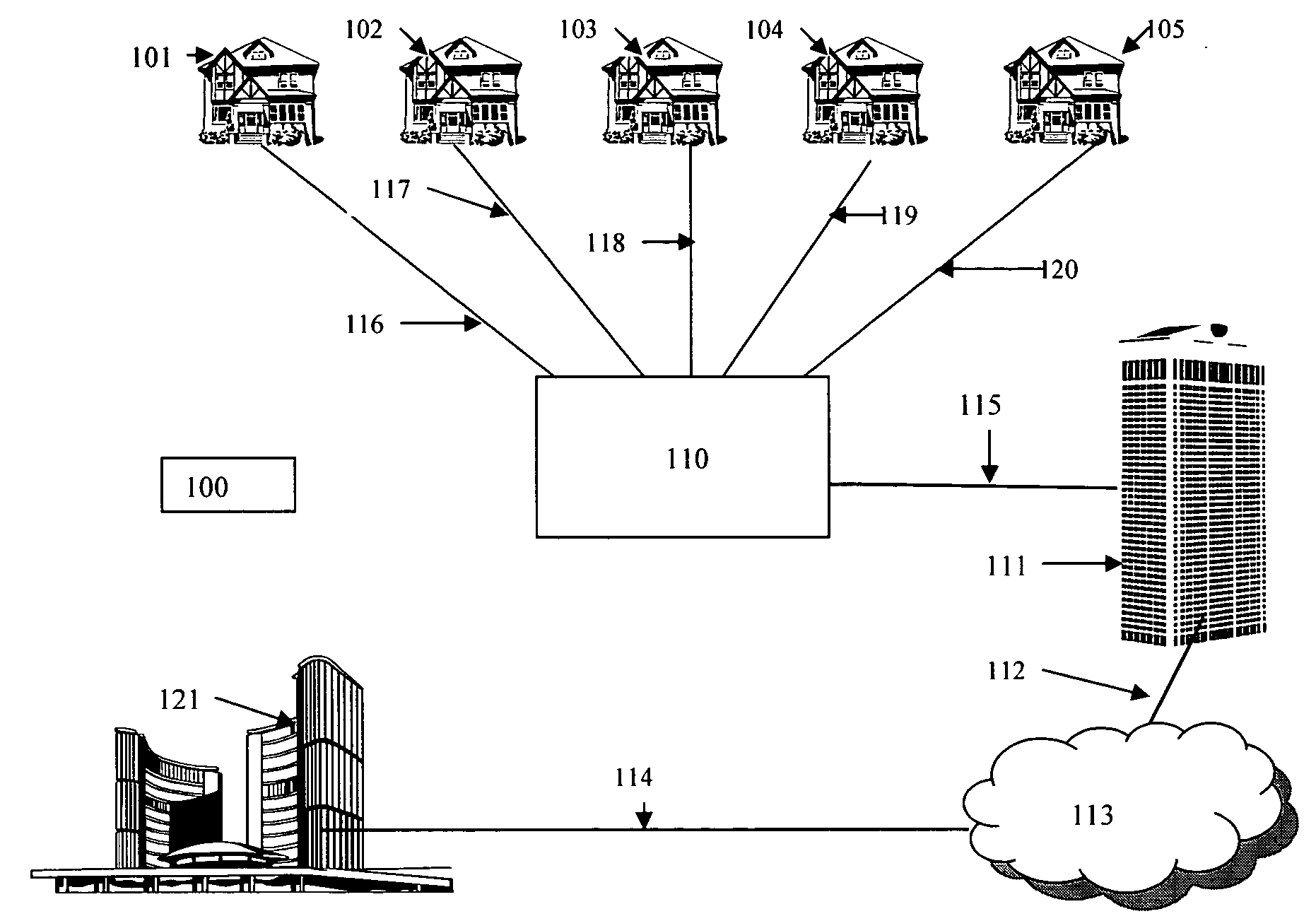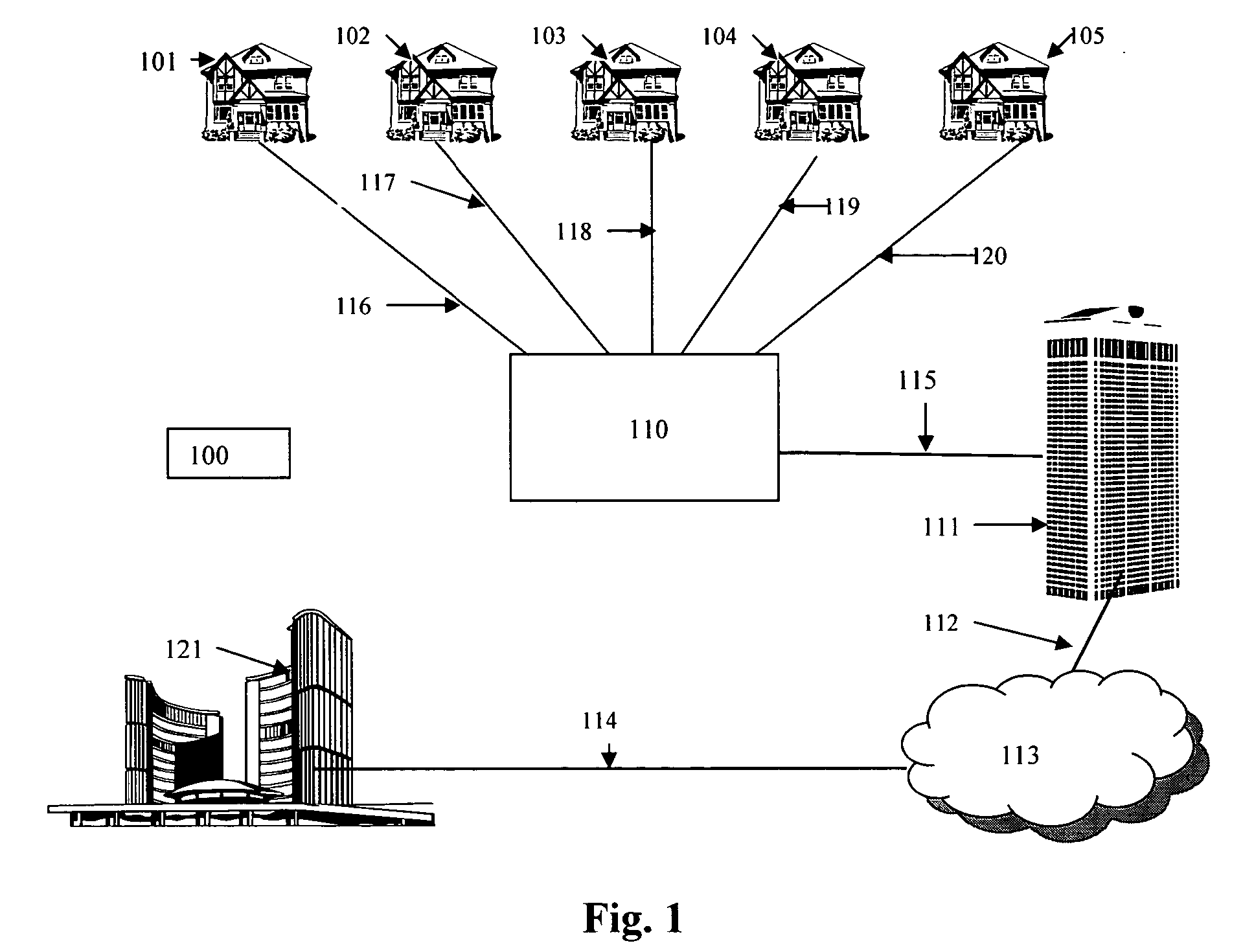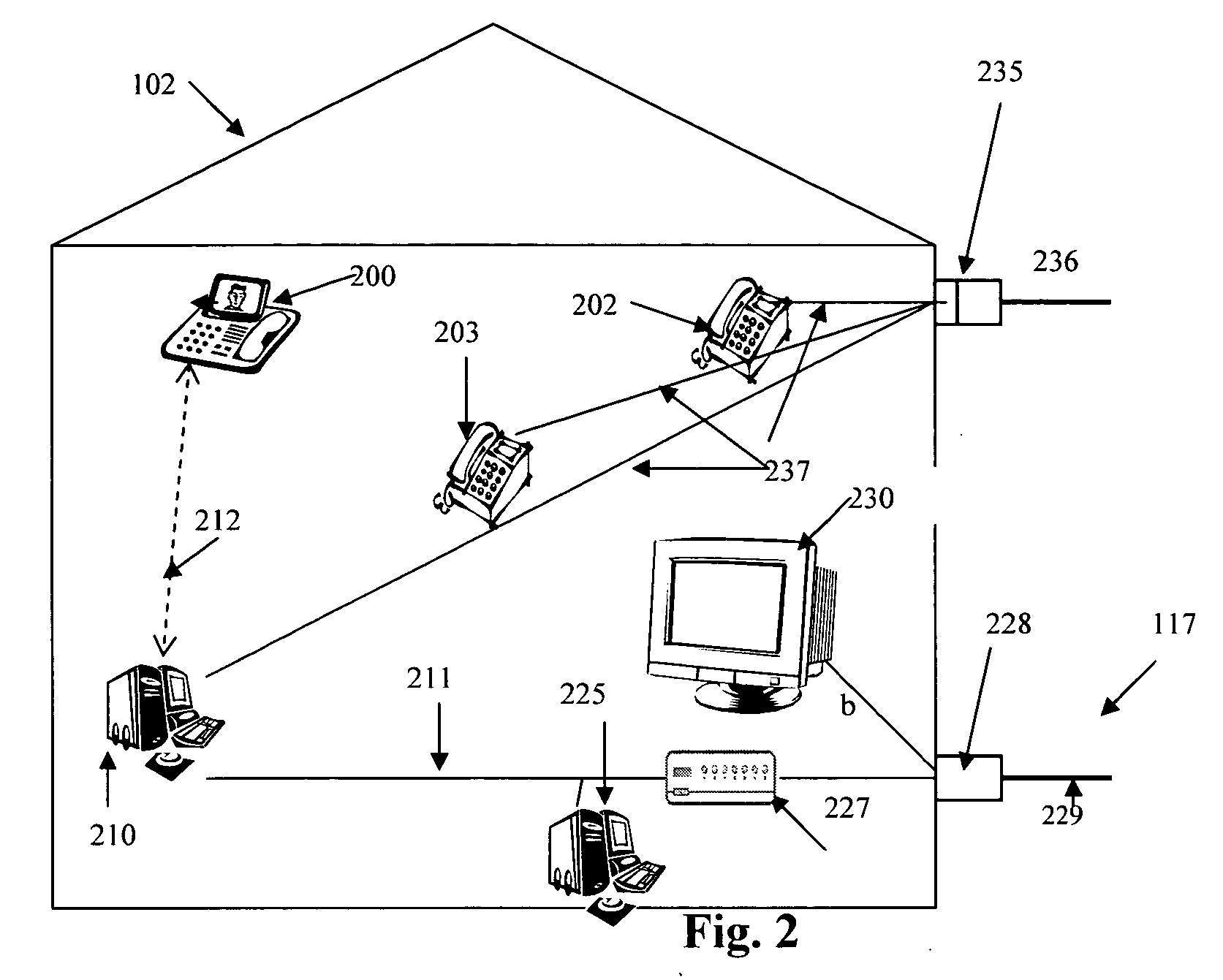Videophone system and method
a videophone and portable technology, applied in the field of videotelephony, can solve the problems of inability to provide a network infrastructure capable of two-way communication with minimal signal degradation, high cost, complex design and use, etc., and achieve the effect of easy adjustment of both display monitors, easy movement to multiple locations, and increased deployment possibilities
- Summary
- Abstract
- Description
- Claims
- Application Information
AI Technical Summary
Benefits of technology
Problems solved by technology
Method used
Image
Examples
Embodiment Construction
System 100
For purposes of this specification, the term “configured” means having hardware and software operatively arranged to perform a specified function. As shown in FIG. 1, a video telephone system 100 according to the present invention comprises subscribers 101-105, configured to communicate via a communications network 110 such as a Community Access Television (CATV) network, an xDSL network, a WAN, LAN or other wired or wireless network (individually and collectively referred to herein as a “broadband network”.) For purposes of this description, reference will be made to the CATV network 110 for simplicity; however, other types of communications networks, such as those referred to above, could also be utilized and referenced in accordance with the present invention. In one embodiment of the invention each subscriber 101-105 communicates with the network 110 via a corresponding communications medium 116 to 120. In one embodiment of the invention, the communications medium in...
PUM
 Login to View More
Login to View More Abstract
Description
Claims
Application Information
 Login to View More
Login to View More - R&D
- Intellectual Property
- Life Sciences
- Materials
- Tech Scout
- Unparalleled Data Quality
- Higher Quality Content
- 60% Fewer Hallucinations
Browse by: Latest US Patents, China's latest patents, Technical Efficacy Thesaurus, Application Domain, Technology Topic, Popular Technical Reports.
© 2025 PatSnap. All rights reserved.Legal|Privacy policy|Modern Slavery Act Transparency Statement|Sitemap|About US| Contact US: help@patsnap.com



